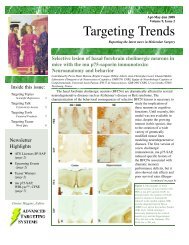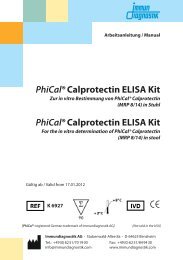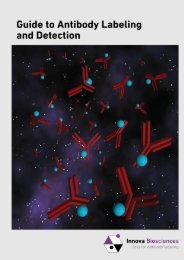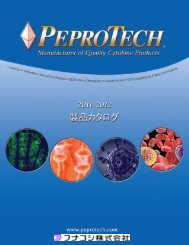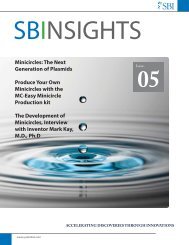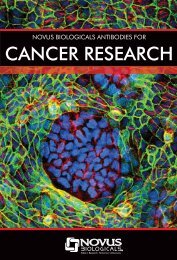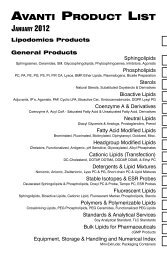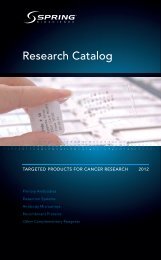Thermo Scientific Pierce Crosslinking Technical Handbook
Thermo Scientific Pierce Crosslinking Technical Handbook
Thermo Scientific Pierce Crosslinking Technical Handbook
You also want an ePaper? Increase the reach of your titles
YUMPU automatically turns print PDFs into web optimized ePapers that Google loves.
Introduction<br />
What is crosslinking<br />
<strong>Crosslinking</strong> is the process of chemically joining<br />
two or more molecules by a covalent bond.<br />
<strong>Crosslinking</strong> reagents contain reactive ends to<br />
specific functional groups (primary amines,<br />
sulfhydryls, etc.) on proteins or other molecules.<br />
Because of the availability of several chemical<br />
groups in proteins and peptides that may be<br />
targets for reactions, proteins and peptides are<br />
readily conjugated and otherwise studied using<br />
crosslinking methods. Crosslinkers also are<br />
commonly used to modify nucleic acids, drugs<br />
and solid surfaces. <strong>Crosslinking</strong> reagents have<br />
been used to assist in determination of nearneighbor<br />
relationships, three-dimensional<br />
structures of proteins, solid-phase immobilization,<br />
hapten-carrier protein conjugation and molecular<br />
associations in cell membranes. They also are<br />
useful for preparing antibody-enzyme conjugates,<br />
immunotoxins and other labeled protein reagents.<br />
Conformational changes of proteins associated with a particular<br />
interaction may be analyzed by performing crosslinking studies<br />
before and after the interaction occurs. Comparing crosslinkers<br />
with different arm lengths for success of conjugation can provide<br />
information about the distances between interacting molecules.<br />
By examining which crosslinkers effectively conjugate to particular<br />
domains of a protein, information may be obtained about<br />
conformational changes that hindered or exposed amino acids<br />
in the tertiary and quaternary structure.<br />
The use of crosslinkers has made the study of surface receptors<br />
much easier. By derivatizing a receptor with a crosslinker before<br />
or after contact with the ligand, it is possible to isolate the<br />
receptor-ligand complex. The use of radioiodinatable crosslinkers<br />
makes it possible to identify a particular receptor by<br />
autoradiographic detection.<br />
To order, call 800-874-3723 or 815-968-0747. Outside the United States, contact your local branch office or distributor.<br />
1



